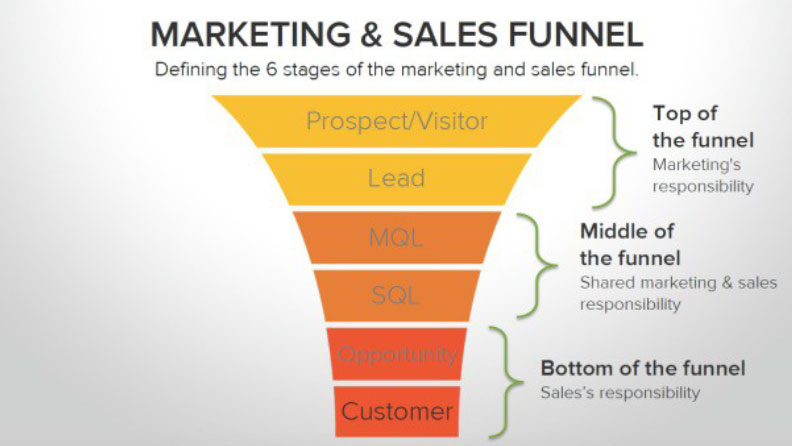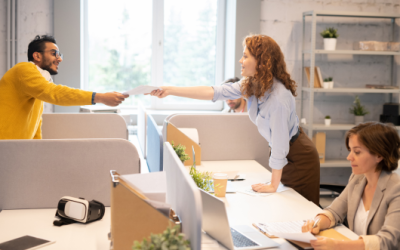Every business has a sales funnel. Some businesses have a very concise funnel with specific stages while other businesses manage their sales funnel loosely. If you were to ask business owners who is responsible, you will probably get mixed answers. Some will say Sales and others will say marketing is responsible for managing the funnel. Who is correct? Both are correct.
The most successful sales funnels involve a collaborative effort where both specific and shared responsibilities are assigned. Let’s look at a collaborative funnel and what it means.

In this funnel, there are six stages that are divided into 3 sections of responsibilities.
- Top of the Funnel section – Marketing has the sole responsibility of managing the top of the funnel which includes Prospect/Visitor and Lead. Marketing creates content through various channels such as the website, search engine optimization, social media, earned media and traditional media to attract prospects. Marketing must also create calls to actions that will convert prospects to leads. Although marketing does all of the heavy lifting in the top of the funnel, Sales can collaborate with Marketing by sharing feedback from customer and bottom-of-the-funnel interaction. This interaction can be valuable in Marketing’s content strategy and curation.
- Middle of the Funnel section – When a lead becomes qualified, they enter into the Marketing Qualified Lead (MQL) stage. They are showing interest in the company’s brand, product or service. They are curious. When they are considering a purchase, they move into the Sales Qualified Lead (SQL) stage. Although Marketing primarily handles the MQL and Sales handles SQL, the middle of the funnel is successful when Marketing and Sales work together. When a lead is curious, Marketing can nurture their curiosity through nurturing strategies like demos and downloads. Sales can support them with deeper knowledge of the product or service and can initiate the customer relationship. When the lead enters the SQL stage, Marketing can support Sales with branded deliverables. The middle of the funnel requires Marketing and Sales to work as a team.
- Bottom of the Funnel section – At this point in the funnel, Sales assumes sole responsibility. After sales matures the customer relationship in the SQL, they guide the lead into the opportunity stage. They understand the customer’s needs and the opportunities to meet those needs. After the sale closes, Sales is responsible for retaining the customer. They do this through interactive customer service, but they also collaborate with Marketing to nurture the customer relationship through marketing automation.
You noticed that we spoke only of one funnel. Marketing funnels and sales funnels are not separate entities. They are one funnel that involves collaboration and teamwork. Businesses that operate on two separate funnels create a gap between Marketing and Sales. Whether they realize it or not, they are losing qualified leads in the gap, and, over time, that adds up. If you would like to talk to us about how a collaborative marketing and sales funnel would look for your business, contact us. We would love to talk to you about it.





